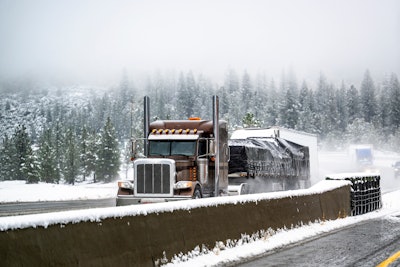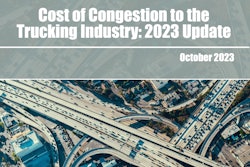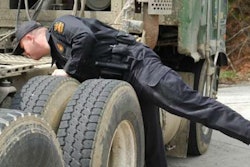
Two of this country's busiest freight corridors can also frequently be the most difficult to negotiate during winter. Ice, snow, and high winds -- often combined -- can give many truckers nightmares when they travel interstates 90 and 94 across the northern tier of states including Minnesota, the Dakotas, Wyoming, Montana, Idaho and Washington.
Now, the departments of transportation in those states want to hear from truckers about their winter driving experiences on 90 and 94. Known as the North/West Passage and formed in 2023 as a Transportation Pooled Fund through the Federal Highway Administration, the group is circulating a survey to drivers, shippers, and others seeking feedback on a variety of issues including accessing weather information, road closures, truck parking, alternate routes and how highways are maintained in the winter.
David Huft is the Intelligent Transportation Systems Program Manager for the South Dakota Department of Transportation. He said one of the things that binds the seven states together is the severity of their winters, especially the winter of 2022-2023.
"Last winter was really a tough winter," said Huft. "We had a lot of snow, a lot of high wind, many closures of interstate highways, some for a matter of hours, some for two or three days. And it wasn't just South Dakota. This was Montana, Wyoming, both Dakotas, Minnesota, and maybe not quite as much in Washington state last winter. But it was hard for everybody. And one of the things that also happened is that we had, because of the severity, we had a lot of closures. We also had a lot of people stranded, including truckers.
"People had cargo they had to get somewhere. One of the unfortunate things that happened is we would close an interstate highway and then navigation apps or trucking companies who didn't want to lose time would send the drivers on other roads, which, of course, were worse than the interstate highways we closed."
Huft said this meant numerous truckers and other motorists had to be rescued. And, he said, truck parking often became a problem.
"We might close 200 miles of (a highway) at a time or almost border to border," said Huft. "So the traffic stacks up at the ends of the closures, and finding enough parking can be difficult."
Those are issues of concern for the North/West Passage group.
Huft said its members have two main areas of focus. One is operations and includes highway maintenance and dissemination of traveler information. The other is freight, and how the operations of the various departments impact truckers.
Hence, the survey.
Huft said the group wants to know, from the perspectives of truckers, shippers, and others in the freight industry "what is difficult about winter in particular? Are there things that we could do better?
"One thing we tried here in South Dakota last year was trying to announce the closure hours in advance. So instead of just saying the road is closed now, we'll say we're going to close the interstate at 5 p.m. this afternoon."
Huft said South Dakota and the other states in the North/West Passage use specialized weather services to predict what sort of weather is on the horizon of the next seven to 10 days, but especially for the next 48 to 72 hours.
In addition to tracking approaching weather, Huft said some of the states in the group are also getting predictions about the surfaces of the highways they maintain.
Huft explains: "Say we're going to get an inch of snow today, it will kind of be a non-event because the last few days were warm, the pavements are warm, and the inch of snow will melt. So it doesn't matter. On the other hand, if the same event were to happen when the roads are closed, or let's take rain as a better example. If it were to rain today, it would be, it would be a non-event. If it rains in February when the roads are frozen, it would be a disaster."
So Huft's department and others use some pretty sophisticated computer simulations of the road surfaces. And, in their snowplows, they have instrumentation that measures the air temperature and the road temperature, and they report back to this system what maintenance is being done.
"So it says we were putting out 200 pounds per lane mile of salt on this road, and the computer says, 'Aha, now I analyzed that and I know that that's gonna keep the road clear for six and a half hours,'" said Huft.
He adds, "The only reason I bring this up is we states are investing in a lot of effort and money for that matter in trying to be as effective in our winter maintenance as we can be."
And, the online survey by the North/West Passage group can also help inform those efforts.












